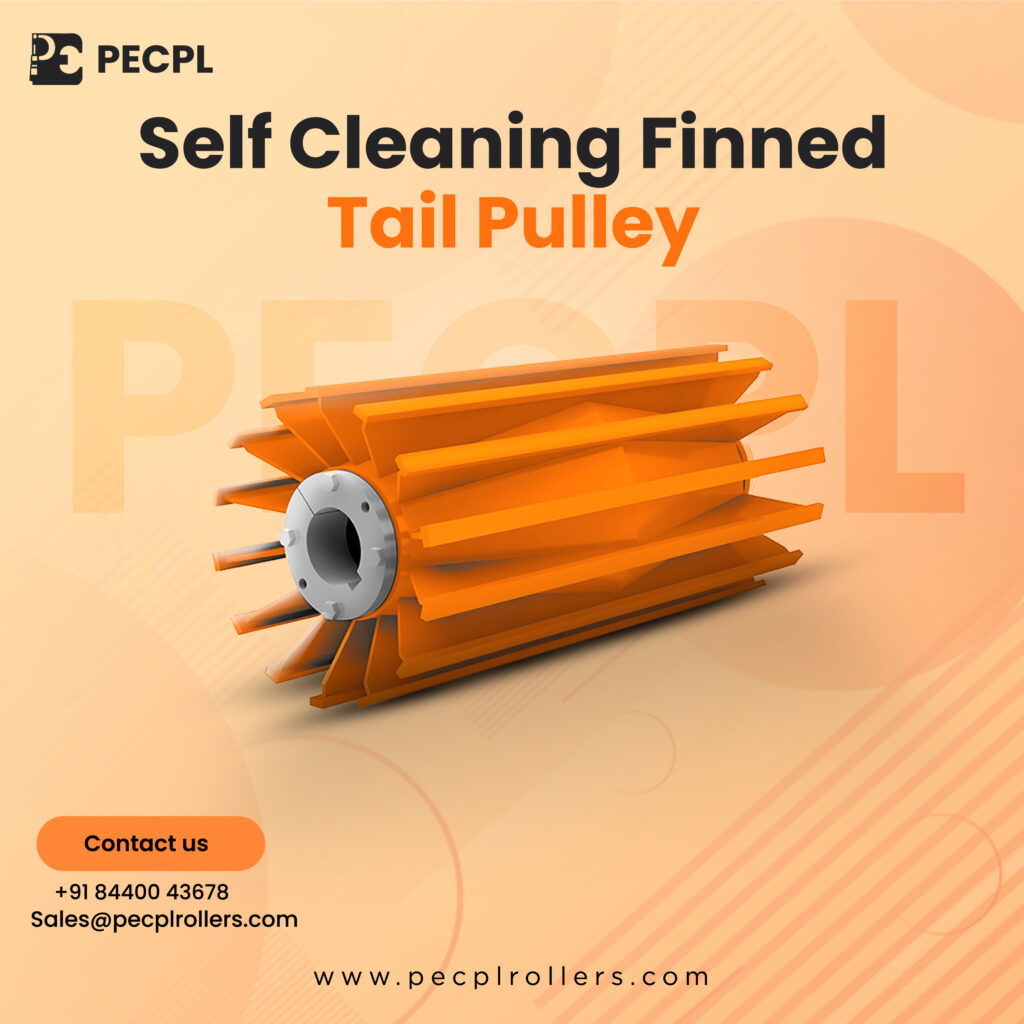
A conveyor belt pulley is a crucial component in the functioning of conveyor belt systems. It serves the purpose of transferring power from the motor to the belt, ensuring smooth and efficient movement of materials. These pulleys are typically made from durable materials such as steel or aluminum, capable of withstanding the heavy loads and constant motion of the belt. The design of the pulley is also important, as it needs to provide sufficient grip on the belt to prevent slipping, while also minimizing friction to avoid excessive wear and tear. Conveyor belt pulleys come in various sizes and configurations, depending on the specific requirements of the system. They can be crowned to help track the belt properly and reduce the likelihood of misalignment. Additionally, some pulleys may have lagging, which is a layer of rubber or other materials applied to the surface to increase traction and prevent belt slippage. It is essential to choose the right pulley for a conveyor belt system to ensure optimal performance and longevity. Regular maintenance and inspection of the pulleys are also necessary to identify any signs of damage or wear and take appropriate action to prevent any disruption in the operation of the conveyor system.
Conveyor belt pulleys are crucial components in conveyor systems, responsible for the smooth and efficient movement of materials. Understanding the role and importance of conveyor belt pulleys is essential for optimizing conveyor performance and minimizing downtime. In this informative post, we will delve into the various aspects of conveyor belt pulleys, including their types, functionalities, maintenance, and troubleshooting.
Outline:
1. What are conveyor belt pulleys?
- Answer: Conveyor belt pulleys are cylindrical devices mounted on the ends of conveyor belts, serving as the driving force in moving materials along the conveyor system.
2. Types of conveyor belt pulleys:
a. Drive pulleys
- Answer: Drive pulleys are located at the conveyor’s head or tail end and are responsible for transmitting power to the belt, enabling it to move materials.
a. Snub pulleys - Answer: Snub pulleys are used to increase the belt’s angle of wrap around the drive pulley, enhancing traction and reducing slippage.
b. Bend pulleys - Answer: Bend pulleys are positioned between drive and snub pulleys, altering the belt’s direction and assisting in maintaining tension.
c. Take-up pulleys - Answer: Take-up pulleys are used to adjust and maintain the tension in the conveyor belt, compensating for elongation or contraction due to varying loads.
3. Functionalities of conveyor belt pulleys:
a. Transmitting power
- Answer: Drive pulleys transmit power from the drive unit to the conveyor belt, propelling the materials forward.
b. Maintaining tension - Answer: Take-up pulleys ensure the conveyor belt remains taut, preventing sagging or slippage.
c. Changing direction - Answer: Bend pulleys redirect the belt, allowing it to navigate curves or changes in the conveyor’s path.
d. Increasing traction - Answer: Snub pulleys increase the belt’s contact with the drive pulley, enhancing traction and preventing belt slippage.
4. Maintenance of conveyor belt pulleys:
a. Regular inspection
- Answer: Conduct routine visual inspections to identify any signs of wear, damage, misalignment, or excessive buildup of debris on the pulleys.
b. Cleaning - Answer: Clean the pulleys regularly to prevent material buildup, which can lead to belt slippage or premature wear.
c. Lubrication - Answer: Properly lubricate the pulleys to reduce friction and ensure smooth operation.
d. Belt alignment - Answer: Check and adjust the alignment of the pulleys to avoid belt tracking issues and excessive wear.
5. Troubleshooting common issues with conveyor belt pulleys:
a. Belt slippage
- Answer: Possible causes and solutions for belt slippage, such as insufficient tension, worn pulley surfaces, or contamination.
b. Excessive noise or vibration - Answer: Identify potential sources of noise or vibration, such as misalignment, loose components, or uneven belt tension, and address them accordingly.
c. Premature wear - Answer: Understand factors that contribute to premature wear, such as inadequate maintenance, excessive load, or misalignment, and take appropriate measures to mitigate them.
Conclusion
Conveyor belt pulleys play a vital role in the smooth and efficient operation of conveyor systems. By understanding the different types, functionalities, maintenance requirements, and troubleshooting techniques associated with conveyor belt pulleys, businesses can optimize their conveyor performance, minimize downtime, and ensure safe and reliable material handling processes. Regular inspection, cleaning, lubrication, and alignment are essential for extending the lifespan of conveyor belt pulleys and maximizing their efficiency.
